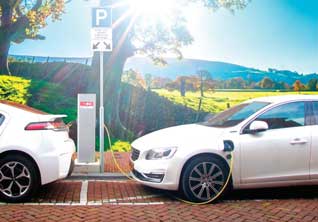Automotive Industry: Electric vehicles, driving up Asia’s net-zero future
How can a strong EV agenda support Asia’s high-growth goals? EV penetration has been increasing, and globally, it rose from 4.4% in 2020 to 8.8% global. Asia-Pacific posted a 151.7% year-on-year growth, according to Frost & Sullivan’s 2022 Global Electric Vehicles Outlook, adds Angelica Buan in this report on the automotive sector in Asia.
From electrification to decarbonisation
The transportation sector, which accounts for more than 25% of global greenhouse gas (GHG) emissions and roughly half of global oil consumption, is ramping up its efforts to fight global warming. Carbon emissions have also increased, which may be attributed to the expanding transportation sector. Asia, the fastest growing region for private vehicle ownership, accounts for roughly 40% of global GHG emissions.
However, the Asian automotive sector is accelerating its decarbonisation efforts by, among other ways, increasing uptake of electric vehicles (EVs), as well as collaborating with climate stalwarts and conquering global markets in bid to decarbonise the transportation sector.

Transitioning from internal combustion vehicles (ICVs) — vehicles powered by gasoline and diesel engines — to EV technologies such as hybrid electric vehicles (HEVs), plug-in hybrid electric vehicles (PHEVs), battery electric vehicles (BEVs), and fuel cell vehicles (FCVs), appears to be the way to go.
But there appears to be a catch. As long as non-renewable energy is used in many countries, including Asia, EVs will be unable to deliver on their net zero promise. Adoption of hydrogen vehicles, for example, raises concerns about their sustainability: how hydrogen is obtained and the source of energy used to obtain hydrogen. These concerns stem from the industries’ continued reliance on carbonintensive energy sources for industrial operations, such as coal or fossil fuel.
According to a study from the universities of Exeter, Nijmegen, and Cambridge, EVs can help to reduce carbon emissions even if power generation still uses a significant amount of fossil fuel.
It found that average lifetime emissions from electric cars are up to 70% lower than petrol cars in Sweden and France, where electricity is derived primarily from renewables and nuclear power, and around 30% lower in the UK. Besides, if every second car on the road by 2050 is an EV, global CO2 emissions could be reduced by up to 1.5 gt/year.
Asian countries warming up to EVs
Southeast Asia, home to five major automakers (Thailand, Indonesia, Malaysia, Vietnam, and the Philippines), identifies the need to accelerate its EV goals if it is serious about reducing carbon emissions.
More EV production would necessitate a shift in both perspective and policy. Thailand, Malaysia, and Indonesia have already implemented new EV policies and are preparing for a full-fledged EV ecosystem, which includes increasing EV usage and incentivising private investment across the value chain
Thailand is eyeing to produce 250,000 EVs, 3,000 electric public buses, and 53,000 electric motorcycles by 2025. Malaysia is focusing on increasing clean energy production in order to encourage EV adoption on a larger scale. It seeks to have a 25% renewable energy share of its generation capacity by 2025.
Indonesia, ASEAN’s largest auto market, accounting for 32% of the regional market, has prioritised the EV sector, granting it 100% foreign company ownership, among other benefits. Its US$17 billion EV roadmap seeks to achieve utilisation of 2.1 million electric motorcycles and 400,000 electric cars – 20% of which to be made locally, by 2025.
The country has an edge due to its local nickel reserves, which are used in the production of lithium ion batteries for EVs. It is the world’s largest, with 72 million tonnes, accounting for 52% of global nickel reserves.
Vietnam’s road map is being developed in stages, with the second phase spanning 2030- 2040 to develop and produce 3.5 million EVs, and the third phase spanning 2040-2050 to increase production to 4 million EVs.
As for China, the world’s largest vehicle producer and the country with the largest share of EV sales, it has taken a milestone step of halting new gas-powered car sales by 2035 to focus on producing EVs, plug-in hybrids, and fuel cell models in line with its commitment to achieve zero emissions by 2060.
Overall, the Asian region’s EV market is set to grow, which may boost confidence in meeting national emissions targets and, ultimately, meeting the global 1.5-degree climate cap.
(IMA)Subscribe to Get the Latest Updates from IMA Please click here
©2022 Injection Moulding Asia. All rights reserved.


















